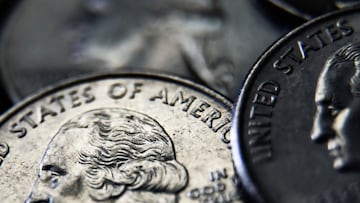These quarters could be worth more than $2,000: How do I know if I have one?
Take a closer look at your spare change because there are 25-cent coins that can be worth more than $2,000. Find out how to determine if you have one.

There are specimens of coins and bills that circulate and can sell for thousands of dollars to collectors. This is the case for certain 25-cent coins from 2004, which could be worth up to $2,000. Find out how to know if you have one.
READ ALSO: The dangers of exceeding your credit limit
These quarters could be worth up to $2,000: How do I know if I have one?
The vast majority of quarters are worth their face value. However, there are some that can be worth thousands of dollars due to errors when they were produced, making them a collector’s item.
Wisconsin state quarters issued in 2004 could be worth at least $30 and perhaps much more.
All the pieces in that series show a cow, a wheel of cheese, and an ear of corn with several leaves. However, some have a detail under one of the leaves of the cob, known as “extra leaf high”, which makes them worth more money.
According to the Professional Coin Grading Service, the record sale for one of these “extra leaf high” Wisconsin quarters is $2,530. However, the value will depend on various factors.
READ ALSO: The city that will pay you up to $15,000 if you move there
Look for the extra leaf on your Wisconsin state quarters! pic.twitter.com/0Qg2Dc3Tol
— Couch Collectibles (@couchcollect) May 26, 2022
This is how the value of a bill or coin is determined
According to the US First Exchange site, there are four types of value: catalog value, purchase price, retail or retail value, and wholesale value.
Related stories
The list value is the average price that most merchants would sell a coin or note for. The purchase price is what a merchant would be willing to pay. Retail value is the price for which a specific dealer would be willing to sell you a coin or note. The wholesale value is the price that merchants use when they trade with each other.
The value of a coin or note is essentially determining the value of the catalog based on three main factors: the rarity, the condition/grade of the coin or note and the market conditions; that is, demand. The combination of these three factors determines whether a coin or bill is worth more or less money.

